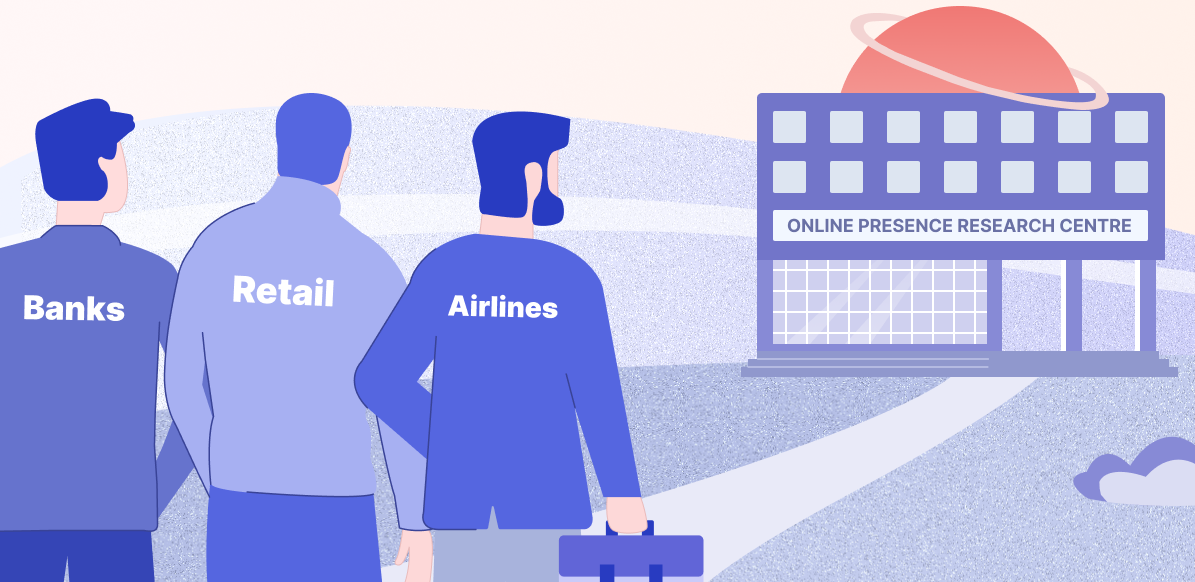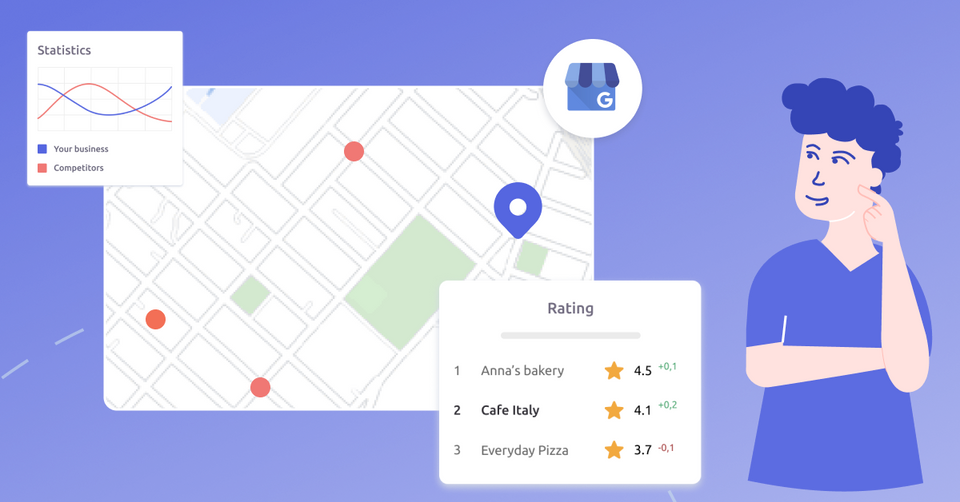Intro
We at Geojet have been working with multi-location companies for a while. As our software helps companies to integrate online maps and review services into digital CX strategy services we gathered some expertise in that field. In order to increase our expertise, we’ve decided to run detailed research of various multi-location companies in different global markets. Among these markets we’ve chosen:
- Europe (as a region where we mostly work)
- North America (as a region where marketing technologies are being developed in the fastest way possible)
- MENA (the region where the digital market is being rapidly developed)
Among researched multi-location companies we’ve chosen the following sectors:
- Banks (as mostly they pay strong attention to their digital presence). This sector is massive, so it’s been analyzed only in the EU, MENA, and India.
- Retail (even with the growth of delivery services multi-location retail companies should still maintain a lot of brick-and-mortar locations in order to provide local shoppers). This sector is massive as well, so it’s been analyzed only in the EU and MENA
- Airlines (not that obvious, but airlines have lots of ticketing offices and locations at multiple international airports). This sector has been analyzed in North America, the EU, and MENA.
This research is relevant only for multi-location companies. The pandemic forced them to rapidly digitalize their brick-and-mortar locations and heavily invest in online stores. However, this is not a one-sided story. Demand from customers to easily reach and access not only products but also information about their favorite local stores also grew. According to Uberall’s research 74% of customers have a shopping preference that includes the local store at one point or another, while only 17% of consumers prefer to research and buy products online only. In addition to that, there is some search engine logic in play.
Online maps and review services are among one of the most important factors that tell a search engine that your business is active. Therefore active businesses could be promoted to the top of search engine ranking, which allows them to get more traffic to their websites. And if businesses get more traffic to their websites - they get more traffic to their online stores.
That confluence of interests increased the significance of online maps and review services - a new playground for businesses and consumers to engage.

Research Methodology
In our research, we decided to focus on Google Maps. Despite the fact that digital presence is important not only on Google Maps (don’t forget about Apple Maps, Bing, and Yandex Maps). As Google dominates the search engine market with a stunning 92,74%, Google Maps is the most crucial online maps and review service to analyze In addition to that:
- According to SOCi’s research businesses in the 3-Pack receive, 126% more traffic and 93% more actions (calls, website clicks, and driving directions) than businesses ranked 4-10
- Top businesses are 40% more likely to appear in Google’s 3-Pack
- According to Brightlocal Consumer use of Google to evaluate local businesses has leapt from 63% in 2020 to 81% in 2021
- Moreover, because of wrong addresses, telephone numbers or website information these banks could be missing significant online traffic while customers are trying to reach them as Google Maps is 6 times more popular than other navigation apps
That’s only if we’re talking about digital presence. However, if we could have considered digital presence without reviews 7 years ago, nowadays it’s completely impossible. According to Hubspot, consumers trust user-generated content (UGC), like reviews, 9.8x more than paid advertisements. In addition to that:
- 90% of consumers stated that their buying decisions were affected by online reviews
- According to Brightlocal’s research Consumer use of Facebook to evaluate local businesses has dropped from 54% in 2020 to 48% in 2021
- Only 13% of consumers used Apple Maps to evaluate local businesses in 2021
- 89% of consumers are 'highly' or 'fairly' likely to use a business that responds to all of its online reviews
- According to Uberall’s research reviews are among Top-5 factors that influence a decision to buy in local stores
Thus, how companies work with reviews is undoubtedly important and therefore appearance on reviews services (e.g Tripadvisor, Foursquare, Yelp, and above-mentioned Facebook and Apple Maps) is also an important factor in local ranking. However, this is not as significant as digital presence and work with reviews on Google Maps.
Updating information on Google Maps is undoubtedly important as it allows consumers to find your business. Working with reviews is important because that forms ratings on Google Maps and ratings could easily show potential clients if your business is reliable or not. There are different opinions in the local search industry on what’s a trustworthy rating:
- According to Uberall, getting to a 3.7-star rating is a key benchmark for businesses that want to win more customers.
- According to Brightlocal’s research, an average rating should be at least 4.0 as no business is perfect, and users understand this.
- According to Spiegel Research Center, a rating between 4.2-4.5 is more likely to lead to sales because it simultaneously shows that a business cares about customer feedback and at the same time helps avoid assumptions that a business is too good to be true.
- Based on our expertise an ideal profile should have a rating of 4.2 and have at least 70 reviews. However, there couldn’t be any certain digit - businesses just should work with customer feedback on a daily basis and measure results.
With that being said we’ve analyzed how banks, retail, and airlines perform on Google Maps, as it’s a cradle of working with online maps and review services. If a company takes care of its Google Maps appearance we can make sure that it has online maps and review services in its digital strategy. In order to analyze the appearance on Google Maps we’ve taken into account the following factors:
- Unclaimed Business Profiles. That’s crucial as without claiming business profiles third parties could easily get access to local listings
- Missing Information. For instance, such as telephone numbers, addresses, photos, website information, working hours, etc.
- Work with reviews. Factors such as average rating, reply to reviews, and possession of negative reviews have been analyzed
Based on these factors we’ve grouped all of the researched companies into a few groups:
- Very Bad. Companies got into that group if they had a lot of missing information. For instance, for one location multiple pieces of information could be missing (e.g. photos+working hours, photos+website, or everything at the same time). In addition to that, they have a lot of negative reviews that they haven’t been working with. Their business profiles are mostly unclaimed. Thus, they haven’t integrated or just occasionally integrated online maps and reviews services into their digital strategy
- Bad. Companies that got into that group have a significant amount of missing information (e.g. working hours or photos, but only sometimes working hours and photos at the same time). They have negative reviews and sometimes even work with them (however, that doesn’t happen often). Their business profiles are claimed extremely rarely, which clearly shows that they do not systematically work with Google Maps, but rather occasionally based on initiatives of location managers.
- Good. Companies that got into that group have some missing information (e.g. working hours or photos but very rarely working hours and photos at the same time). They mostly work with negative reviews only missing some. Most of their locations are claimed. Those factors show that companies from that group systematically work with online maps. They probably use some sort of software or have lots of local store managers who are aware of the importance of Google Maps. They have occasionally integrated or just tried to integrate online maps and review services in their digital strategy.
- Very Good. These companies rarely miss any information (most of their business information is relevant and updated). They actively work not only with negative reviews but also with positive reviews. Most of the locations are claimed and sometimes they even have unified branding (meaning that a cover photo is represented by a company’s logo/photo in multiple locations). These companies have not only properly integrated online maps and review services in their digital strategy but also proactively worked with this channel. We are 99% sure that these companies either have some sort of software or work with a local agency that helps them keep their digital presence intact.
With that information, we can proceed to talk about specific groups of companies that have been analyzed in the following article.





